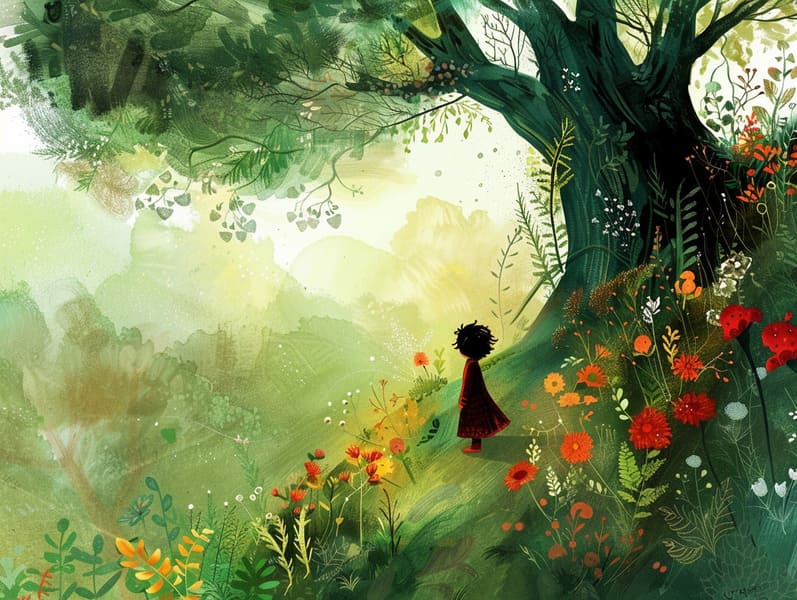
Ancient fairy tales have historical significance. These stories have been shared from one generation to the next millennia before they were ever recorded. They developed from a variety of civilizations, including African traditions. They were initially shared among adults, often carrying themes and messages concerning the societal norms and beliefs of the time.
The famous Grimm duo, Jacob and Wilhelm, were among the first to compile and release many of these beloved tales. Their anthology, "Grimm's Folk Tales," included stories like "The Story of Cinderella," "The Bread Crumb Trail," and "Schneewittchen," which have since become mainstays in the world of iconic fairy tales. Similarly, the Danish author's imaginative fairy tales, such as "The Sea Maid," and "The Ugly Duckling," have enchanted hearts worldwide, solidifying their place in the pantheon of beloved fairy tales.
Despite their age, these tales remain as meaningful as ever, especially as bedtime stories for kids. These enchanting tales are now available in diverse formats, including colorful picture books, delightful animations, and online storybooks.
Their ongoing significance can be connected to several delightful features:
Significant Morals: Traditional fairy tales often illustrate important moral lessons. Narratives like "The Shepherd Boy and the Wolf" teach the benefit of honesty, while "The Story of the Tortoise and the Hare" illustrate the qualities of tenacity and modesty. These narratives offer the young clear distinctions between moral and immoral, molding their moral compass in a tender yet profound way.
Warmth and Understanding: Traditional fairy tales frequently present individuals facing obstacles and hardships, fostering audiences to identify with their struggles and champion their triumphs. For instance, "The Story of Beauty and the Beast" highlights the virtue of looking past the exterior to perceive the real person of a being, promoting insight and comprehension.
Cultural Appreciation: Many timeless fairy tales are imbued with the cultural contexts from which they arose. Engaging with these fairy tales can provide delightful insights into different historical contexts, encouraging a sense of global appreciation and acknowledgment.
Imagination and Innovation: The supernatural elements in timeless fairy tales—enchanted objects—inspire children’s fantasies. These fairy tales lead readers to magical realms, stimulating inventive ideas and a sense of awe that continues a lifetime.
Classic fairy tales are not only magical but also pedagogical. They work as fantastical tools in enhancing various intellectual and emotional capacities in young ones. When timeless fairy tales are spoken, they strengthen linguistic abilities by presenting new language items and intricate sentence structures. This practice also nurtures hearing abilities and attention span, as children focus on every detail, eager to see what happens next.
Furthermore, contemplating the themes and characters of ancient fairy tales can strengthen cognitive skills and problem-solving abilities. Kids are instructed to identify patterns, make predictions, and know cause and effect. These talks also assist the young articulate their thoughts and feelings, nurturing their emotional intelligence.
In today’s online age, the presence of online storybooks has made these narratives more available than ever. Websites and software share ample collections of Grimm's fairy tales that can be looked at or played anytime, anywhere. Fairy tales told out loud are particularly liked, offering an entertaining method for young readers to be a part of these alluring stories. Read-aloud books and read-to-me stories bring characters and settings to life, often supported by spellbinding sound effects and songs that boost the narrative experience.
The lasting allure of old fairy tales lies in their ability to alter to changing times while staying true to their core values. Contemporary updates of these narratives often present more representative characters and modern settings, making them relevant to today’s audience. However, the basic principles of braveness, generosity, and truth remain unchanged, continuing to affect young listeners of all ages.
Traditional fairy tales also offer a sense of security and familiarity. They grant access to a organized narrative with a apparent beginning, middle, and read more end, often winding up with the ending of conflicts and the triumph of morality over wickedness. This reliability can be relieving for young ones, delivering a sense of solidity in an ever-changing world.
Timeless fairy tales continue to fascinate and guide new generations, maintaining their fascination and meaningfulness in modern society. As children's night stories, they render accessible a perfect blend of magic and knowledge, furthering moral values, empathy, and creativity. The accessibility of online storybooks and the in demand status of fairy tales narrated make sure that these timeless stories remain accessible to new generations.
By keeping and relating these fairy tales, we continue to extol the rich tapestry of inventiveness and cultural heritage. Whether you are accessing a colorful picture book, seeing a electronic library, or hearing an sound book, the elegance of timeless fairy tales is always within reach. These narratives teach us of the unending magic of tales and its ability to unite us across eras and regions.
Regardless if you are browsing a beautifully illustrated book, perusing a web-based collection, or listening through an narrated book, the charm of classic fairy tales is always within reach.
These fairy tales demonstrate of the unending force of stories and its ability to tie us across time and space, making a tie that enchants and educates alike.